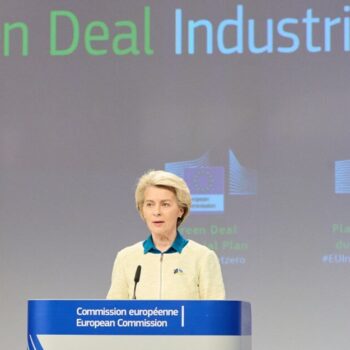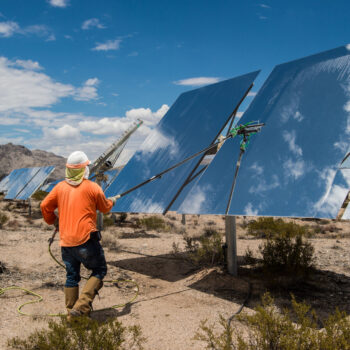Six months into negotiations on the clean energy package and the pitfalls and opportunities shaping the outcome are emerging. E3G reflects on key success factors, potential scenarios, and how to avoid the worse results.
The plot is more or less agreed. The European Commission entrusts the European Parliament and the Council of the EU with a set of legislative proposals meant to drive the EU’s clean energy transition to make it the world’s leader in renewables, put efficiency first, and lead incumbent and new business models to get along. Heated debate ensues.
The main players are known: the European Parliament, and the Member States led by Malta, Estonia, followed by Bulgaria and Austria, who will take on the presidency of the council of the EU over 2017 and 2018. Many extras are also mobilised, such as consumers, NGOs, businesses, cities and other non state actors that have a stake in the matter.
The ending is yet to be written. Will the final deal between Commission, Council and Parliament succeed in developing a set of market rules, policies and governance structures to ensure the EU’s affordable, inclusive and investor-friendly decarbonisation?
We look at early developments, extrapolate the negotiations into four different but plausible paths and reflect on what could help our heroes reach the best outcome for climate and European smart energy leadership.
Scenario #1: Obstruction from “status quo” industries
As in all political processes, decision-makers working on the clean energy package will be exposed to the advice of numerous experts and representatives of interest groups such as consumers, businesses, think tanks and NGOs. These groups’ input will contribute to shaping the position of specific countries and political groups. Their ability to align in favour for or against certain propositions is a key determining factor of their influence.
Early warning signs: Incumbent lobby groups opposed to the inclusion of sustainability criteria in the design of capacity mechanisms were quick to organise and blow this proposal out of proportion.
Extrapolated scenario: Opposition to the Commission’s proposals prevails. Attacks are organised on the overall level of ambition, as well as on specific elements enabling faster development of renewables, energy efficiency and demand side flexibility. Member States give priority to not disagreeing with their peers rather than agreeing to a meaningful package.
Reaction: Ensuring a positive outcome would require the European Commission to fiercely defend its proposals; strong cohesion and enhanced engagement from the part of progressive stakeholders among investors, businesses, cities and regions, NGOs, consumers and politicians; naming and shaming of the worst offenders.
Scenario #2: Protection of consistency and regulatory strength of overall package
The clean energy package is greater than the sum of its parts. It proposes a comprehensive approach to energy transition and creates a delicate balance between allowing for disruption while guaranteeing investor certainty. Weakening its consistency would lessen its impacts on the real economy.
Early warning signs: Member states were prompt to criticise the governance proposals for including linear trajectories for the development of renewable energy and energy efficiency. These trajectories are crucial to assess whether member states are on track to delivering their targets. Introducing more flexibility – or making them non-binding –would reduce capacity to hold member states accountable, and affect the credibility of the targets included in the energy efficiency and renewable energy directives.
Potential scenario: Member States and Parliament are reasonably aligned on increasing the overall ambition of the package. However crucial elements of the legislative texts are weakened and threaten future deployment of renewables, energy efficiency and demand side flexibility. This will negatively impact consumers and the potential for new market entrants to disrupt the market. The final package risks being an empty shell.
Reaction: Progressive actors must rally to bring politicians to look beyond the headlines. Experts will be needed to inform stakeholders and politicians of the potential loopholes a weak package may create. They will need to explain the quality and enforceability of regulatory and market rules are as important, if not more, than headline objectives.
Scenario #3: Time pressure on negotiators
The Commission has made clear they expect agreement in Council and Parliament by the end of 2017. This puts pressure on the council presidencies and on MEPs not necessarily expert on the detailed functioning of the energy sector. Insistence on delivering quickly may force negotiators to take shortcuts and thus weaken the overall consistency of the package.
Early warning signs: pressed for time, the Maltese presidency was prompt to weaken the energy savings objective of the Energy Efficiency Directive, despite the opposition of a block of Member States.
Potential scenario: Under this scenario, there is so much pressure on finalising the package quickly that negotiators opt for the lowest common denominator, threatening the consistency and quality of the package.
Reaction: The role of the council presidencies will be crucial in this scenario. Support from the Commission or other Member States would also be key in agreeing to the best deal possible. Progressive stakeholders and member states should double down on efforts suggesting acceptable consensus positions.
Scenario #4: Emergence of new EU & climate champions
The EU is going through difficult times. Support for European initiatives, even for such rallying causes as the Energy Union, seems to have stalled, if not dwindled. The emergence of positive pro European voices may embolden and galvanise the negotiations on the clean energy package.
Early signs: The victory of pro-European parties or candidates in France and the Netherlands sends signals of hope for the future of the EU. The strong European reactions to president Trump’s decision to pull the US out of Paris may also signal a determination to increase the EU’s climate and clean energy ambition.
Potential scenario: Renewed political appetite from capitals to boost the European Union leads to the creation of a strong coalition focusing on themes of high EU added value such as the clean energy transition and climate resilience. The completion of the energy union, and in particular its implementation through a robust and ambitions clean energy package becomes a strong priority for several leading member states.
How to get there: Moving to this scenario will require strong engagement from capitals on European issues, supported by national and European civil society. Under this scenario, the idea that the EU can only be strong and competitive if it is sustainable prevails.
Which story do you want to be a part of?
Looking at the range of possible outcomes, progressives must get ready to:
- Follow the negotiations closely and be vigilant throughout.
- Make politicians and incumbents accountable for their positions.
- Seek cohesion among themselves. Cities, consumers, health advocates, European businesses, can all benefit from a robust and consistent package.
- Embolden their politicians to drive a pro European and climate friendly agenda.


